#promptbooks
Explore tagged Tumblr posts
Text

#my31prompts #pumpkin #october #31creepy #promptbook #sketch #makeart **Search “31 Creepy” on Amazon!** https://a.co/d/7jBCpRi
3 notes
·
View notes
Text



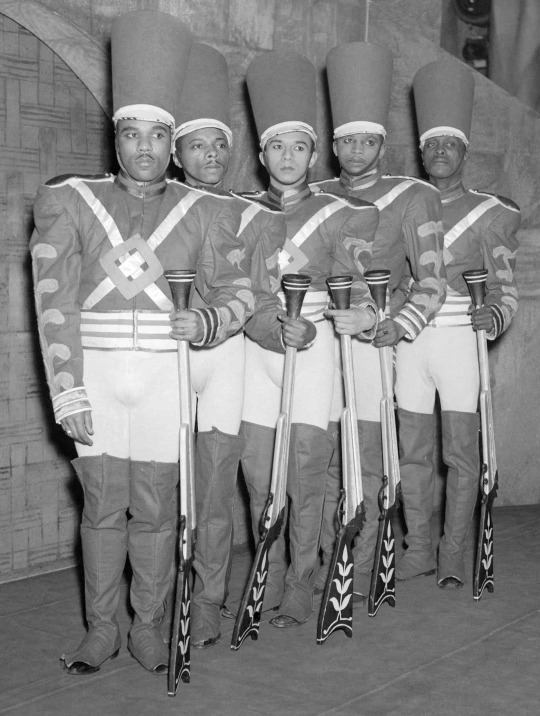
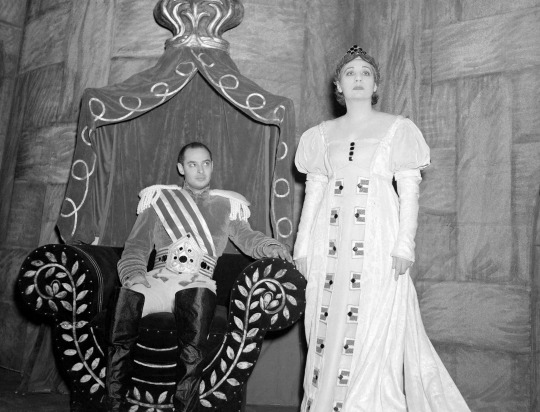
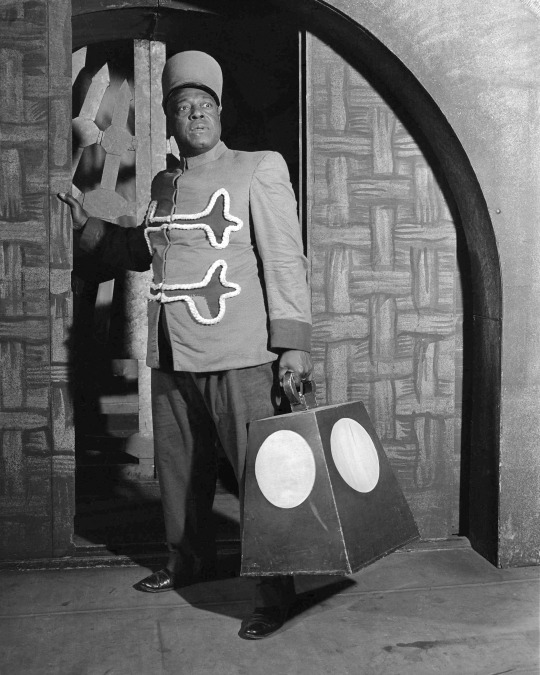


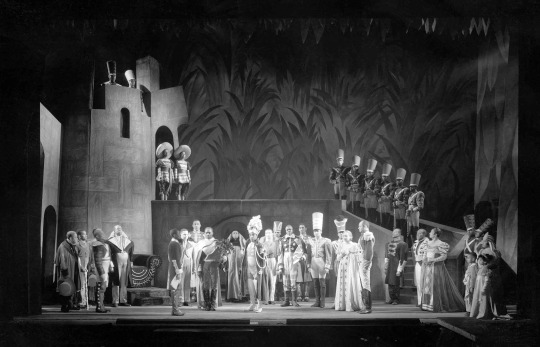

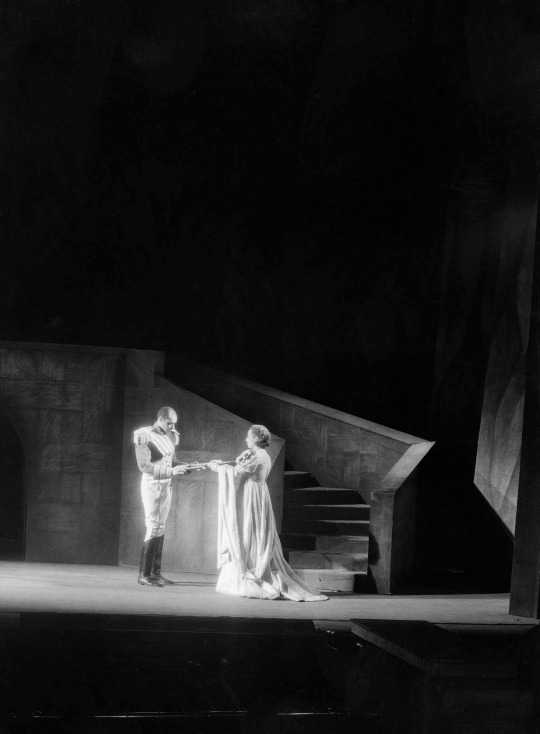
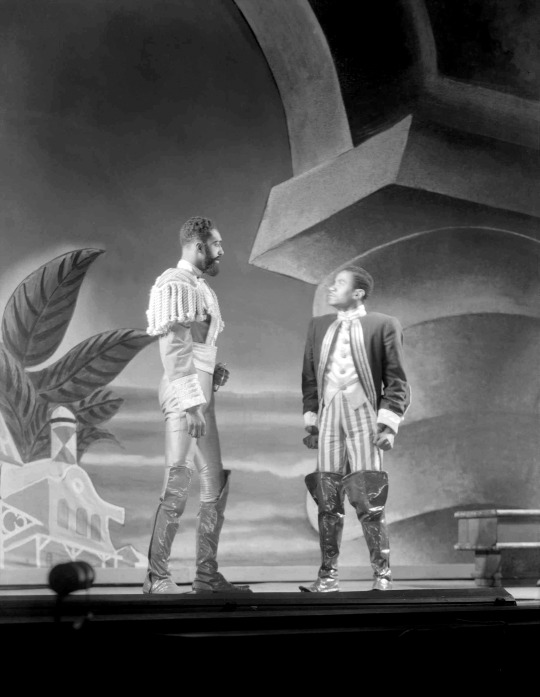



@thealmightyemprex @professorlehnsherr-almashy @amalthea9 @princesssarisa
The Voodoo Macbeth is a common nickname for the Federal Theatre Project's 1936 New York production of William Shakespeare's Macbeth. Orson Welles adapted and directed the production, moved the play's setting from Scotland to a fictional Caribbean island, recruited an entirely Black cast, and earned the nickname for his production from the Haitian vodou that fulfilled the role of Scottish witchcraft. A box office sensation, the production is regarded as a landmark theatrical event for several reasons: its innovative interpretation of the play, its success in promoting African-American theatre, and its role in securing the reputation of its 20-year-old director.
Shakespeare's play is about the downfall of a usurper in medieval Scotland, who is encouraged in his actions by three witches. The central idea behind Welles's production was to perform the text straight, but to use costumes and sets that alluded to Haiti in the 19th century, specifically during the reign of the slave-turned-emperor Henri Christophe. Although the main reason for this choice was that it was an appropriate setting for an all-black cast, Welles felt that it also enhanced the play's realism: he thought the production's popularity was partly due to the fact that the idea of voodoo was more credible to a contemporary audience than was medieval witchcraft.
In many productions, the character of Hecate, the Queen of the Witches, is often cut. Instead, Welles turned the character into a pivotal figure. Performed by Eric Burroughs as a huge man with a bullwhip, Hecate presides over events as a ringmaster of magicians, and often closes scenes. Hecate ends the play with the line, "The charm's wound up", repeated from Act 1. Welles's 1948 film version of Macbeth, in which Hecate does not appear, also ends with this line.
The production used a single, unchanging set of a castle in a jungle. The backdrops featured stylized palm trees and skeleton imagery.
It is not certain whether the production removed references to Scotland from the text. Welles's promptbook keeps them intact, but in the surviving film record of the production's climax, the line "Hail, King of Scotland" is truncated to "Hail, King".
75 notes
·
View notes
Text





more promptbook things i liked
#art#artists on tumblr#doodle#crayon#pen#ballpoint pen#paint pen#alpaca#id in alt text#i am. incredibly fond of that last one even tho. its objectively a bad drawing. its just. its fun. its silly#alpaca: pacette
0 notes
Text
Released tons of projects today :D A tax calculator that functions for any province/territory in Canada for 2024. (not for actual tax use) Two D&D stories I've been sitting on forever. A promptbook for spirituality that I was putting off because I didnt want to do cover art (I didnt bother doing art for it ngl) A small collection thing I was putting off for the same reason (i also didnt do art for it ngl) I also released a really old documentation thing I wrote on "BSG" which was a super in depth and fun as fuck game for college for a business course. Lot of misinformation or just terrible information (and lack of information) on it out there in youtube videos. Like 99% of "guides" about it suck horribly. But I don't know anyone that needs the strat/info book so I hadn't bothered releasing it.
0 notes
Text
I get the point this person is trying to make but: there is no such thing as a “definitive” version of a Shakespeare play.
We don’t have his manuscript. We *maybe* have a bit of the collaborative play Sir Thomas More written in his hand.
What we do have are often various versions that were printed maybe from his manuscript, or maybe from the theatre’s promptbook. They are so mediated.
We don’t know what was actually performed in the theatre during his life. Those actors could perform about 14 different plays a month, so it’s likely their recall of the exact words and word order was far from perfect.
Also, “Shakespeare” has come to be shorthand not just for the writer and historical person, but to all the cultural stuff that accrued over the centuries. For several hundred years, King Lear was performed with a happy ending.
Sure, the person who got the bowdlerize version and insisted that was the “correct” one is ignorant. But the version from the First Folio and Quarto isn’t necessarily the “real” one either.
When it comes to Shakespeare, “correct” or “original” or “real” are completely meaningless.
Mess it up! Update it! Stick characters from other plays in! Do modern dress! Write “rapier” on a gun and wave that around! It’s all good!
(Some of it is bad, but just doing the museum piece version over and over again is worse than that: it’s boring!)
This makes me incredibly angry.

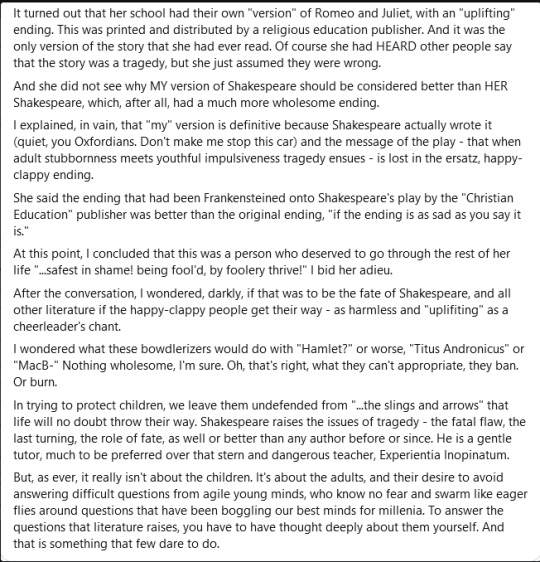
[ID: Screenshots of a Facebook post from user Advocatus Peregrini, which reads:
I was conversing with a fully-grown adult a few days ago, born and educated in the USA, who let this little gem drop:
“Well, it’s like Shakespeare said, "Love conquers all!”“
I pointed out that Shakespeare never said that, Virgil did, (Eclogues X) and Chaucer after him (Canterbury Tales.)
She said, "Oh I’m sure Shakespeare said that. In Romeo and Juliet!”
I sighed. I’ve been in that play several times, in different roles, and even directed it. That text does not occur in it.
But the real grind-my-teeth moment here was that if Romeo and Juliet can be said to have a message, it is most certainly not “Love conquers all,” seeing as the lovers die by their own hands with a trail of their friends and relations’ corpses in their wake.
Neither this fact, nor the fact that I knew the play, nor my explanation that Virgil and Chaucer used the phrase long before Shakespeare’s birth dented her determination that “Love conquers all” came from Shakespeare.
“You don’t know ALL the versions!” she protested.
All the versions?
Alternative Bard?
With every instinct screaming at me to let the matter drop, warning me that some horror that will not soon be absent from my nightmares waited around the next corner of this conversation. I pressed on.
It was a decision I was soon to regret.
I asked when she had first read “Romeo and Juliet.” She said she had only read it once, when she was in Junior High. In the version she was taught, Romeo and Juliet survive, are reconciled with their parents, and are married in the church with their friends Mercutio and Tybalt arm in arm in the wedding party.
“Help me into some house, Benvolio, or I shall faint.”
It turned out that her school had their own “version” of Romeo and Juliet, with an “uplifting” ending. This was printed and distributed by a religious education publisher. And it was the only version of the story that she had ever read. Of course she had HEARD other people say that the story was a tragedy, but she just assumed they were wrong.
And she did not see why MY version of Shakespeare should be considered better than HER Shakespeare, which, after all, had a much more wholesome ending.
I explained, in vain, that “my” version is definitive because Shakespeare actually wrote it (quiet, you Oxfordians. Don’t make me stop this car) and the message of the play - that when adult stubbornness meets youthful impulsiveness tragedy ensues - is lost in the ersatz, happy-clappy ending.
She said the ending that had been Frankensteined onto Shakespeare’s play by the “Christian Education” publisher was better than the original ending, “if the ending is as sad as you say it is.”
At this point, I concluded that this was a person who deserved to go through the rest of her life “…safest in shame! being fool’d, by foolery thrive!” I bid her adieu.
After the conversation, I wondered, darkly, if that was to be the fate of Shakespeare, and all other literature if the happy-clappy people get their way - as harmless and “uplifiting” as a cheerleader’s chant.
I wondered what these bowdlerizers would do with “Hamlet?” or worse, “Titus Andronicus” or “MacB-” Nothing wholesome, I’m sure. Oh, that’s right, what they can’t appropriate, they ban. Or burn.
In trying to protect children, we leave them undefended from “…the slings and arrows” that life will no doubt throw their way. Shakespeare raises the issues of tragedy - the fatal flaw, the last turning, the role of fate, as well or better than any author before or since. He is a gentle tutor, much to be preferred over that stern and dangerous teacher, Experientia Inopinatum.
But, as ever, it really isn’t about the children. It’s about the adults, and their desire to avoid answering difficult questions from agile young minds, who know no fear and swarm like eager flies around questions that have been boggling our best minds for millenia. To answer the questions that literature raises, you have to have thought deeply about them yourself. And that is something that few dare to do.] end id
#shakespeare#william shakespeare#education#theatre is a living art#fuck up shakespeare#he doesn’t care#he’s super dead (I hope)#mess up Shakespeare
3K notes
·
View notes
Text
劇本寫法範例
H:劇本是隱性,電視上的戲劇,故事,小說,演變成劇本,再拍成戲劇。没有商業投入,永不見天日。20230223W4
網路資料:
劇本寫法範例:
劇本雖然也是由文字建構,卻是要用影像的敘事邏輯去建立的——三幕劇公式會是很好的入門手段。 許多創作者的第一個問題是要建立角色,並讓角色立體。 張耀升指出,要讓角色立體,並不是要讓角色有很多面,因為多面的角色反而會讓人覺得面目模糊,有太多面向展示,在觀眾眼中顯得沒有準則。 其實,只要過程寫得好,兩面就足以讓角色變得立體。
劇本格式 分三個部分
一般劇本主要分三個部分,場景標示、畫面說明和對白。
場景說明就是每一個場次開頭時,說明���景的時間地點,寫成「N. 內景/外景 地點 時間」。
場景說明就是每一個場次開頭時,說明場景的時間地點,寫成「N. 內景/外景 地點 時間」。
「N.」指的是第幾場,每換一個時間地點就會換一場,在劇本中依順序12345678一路標示。
「內景/外景(擇一)」就是室內或室外。
「地點」指的就是什麼地方,教室、某某某的家、廚房、樓梯間、公園、路邊等等。
「時間」一般不會寫明確的時間,除非有特殊要求(例:黃昏),否則通常只會註明日或夜(廣一點就是日/夜/晨/昏)。
畫面說明,就也是台灣劇本格式中,三角形 △ 的部分。
劇本三角形 △ 就是指畫面說明或畫面描述,舉凡景色(天黑了、山邊霧氣很重)、走位動作(阿海伯快跑出來)、表演指導(一臉憂愁、蹲下痛哭)、甚至上片頭和字幕等等指示,總之,不是演員台詞的部分,通通都要標上 「△」。
第三個部分就是台詞,這大家應該都很熟悉,就是「角色名:」。
VO是指(Voice Over),就是現場收音不會收到,要由後製「把聲音蓋上去」。
OS(Off-Screen)是指「畫面外的聲音」,例如兩人講話講到一半聽到門外傳來另一個人的說話聲,吸引他們看向畫面外,那便是OS。
維基百科介紹:
劇本
編劇為電影或電視節目撰寫的作品
劇本又稱腳本(脚本/きゃくほん),是編劇為電影、電視節目或電子遊戲所寫的書面作品。劇本是由「何時、何地、誰」組成的具有設計圖作用的文本。與小說形式不同。這些劇本可以是原創作品,也可以改編自現有的作品。其中還對人物的動作、行為、表情和對話進行了敘述。為電視劇寫的劇本也被稱為電視劇本(teleplay)。

劇本樣本,展示對話和動作描述
劇本的寫作,最重要的是能夠被舞台上搬演,戲劇文本不算是藝術的完成,只能說完成了一半,用於舞台演出才是最終藝術的呈現,稱為「腳本」(即「演出文本」或「演出本」)。歷代文人中,也有人創作過不適合舞台演出,甚至根本不能演出的劇本,這類的戲劇文本則稱為「案頭戲」(也叫「書齋劇」)。而好的劇本,能夠具備適合閱讀,也可能創造傑出舞台表演的雙重價值。
一部可以在舞台上搬演的劇本原著,還是需要在每一次不同舞台、不同表演者的需求下,做適度的修改,以符合實際的需要,因此,舞台工作者會修改出一份不同於原著,有著詳細註記、標出在劇本中某個段落應該如何演出的工作用的劇本,這樣的劇本叫做「提詞簿」或「演出本」、「台本」(promptbook)。此外,劇本是完整的演出腳本,有另外一種簡單的舞台演出腳本只有簡短的劇情大綱,實際的對白與演出,多靠演員在場上臨場發揮,而這一種腳本則稱為是「幕表」。
創作者
劇本的創作者叫做「編劇」,或尊稱為「劇作家」。[1]日本則稱作「腳本家」(脚本家)。
內容
劇本是指在一定的戲劇性結構中,展現一個故事的整體,包括人物角色、衝突、場景、場次、對話、動作、情節、事件、音樂等,但它與一般的故事不同,劇本主要由人物對話(台詞或唱詞)和舞台提示組成。舞台提示一般指出人物說話的語氣、說話時的動作,或人物上下場、指出場景或其它效果變換等。
一個典型的劇本例子如下:
內景。天剛亮。
王媽進入室內,放下各種碗碟,端着一碗熱粥,走到小姐身邊。
王媽:(小心翼翼地)小姐,您還是得注意身子,就吃點東西吧。
雞小姐:(把碗砸在地上)不吃,我就是不吃。
王媽: ......
結構
一部較長的劇本,往往會由許多不同的段落所組成,而在不同種類的戲劇中,會使用不同的單位區分段落。在西方的戲劇中,普遍使用「幕」(Act)作為大的單位,在「幕」之下再區分成許多小的「景」(scene)。中國的元代雜劇以「折」為單位,南戲則是以「出」為單位,代表的是演員的出入場順序,而在明代文人的創造後,將「出」改為較為複雜的「齣」。
劇本的結構一般可分為「開端、發展、轉折、高潮、再高潮、結局」。 當然根據編劇技巧的不同,結構𣏹還會變化。如「佳構劇」。
分類
按照應用範圍,可分為:
話劇劇本
電影劇本
電視劇劇本
動畫劇本
遊戲劇本
其他
按劇本題材,又可分為 喜劇、悲劇、歷史劇、家庭倫理劇、驚悚劇等等。
腳本典故
公牘或書稿的底本
《西遊補》第九回:「犯鬼有箇朝臣腳本,時時藏在袖中。」
清 彭元瑞知聖道齋讀書跋·盡忠錄》:「﹝季滄葦﹞以是書見貽,朱墨皆 荊川 筆雲。細閱書中絕無批評,但有圈抹,不得其讀書之意。既取 荊川 《右編》勘之,圈者皆入《右編》,抹者節去,始知即其纂《右編》時腳本。」
表演戲劇、曲藝,攝製電影等所依據的本子,載有台詞、故事情節等
清 李漁 《比目魚·聯班》:「又兼我記性極高,當初學戲的時節,把生、旦的腳本都念熟了。」
清 孔尚任 《桃花扇·選優》:「你就在這 薰風殿 中,把《燕子箋》腳本,三日念會,好去入班。」
孫犁 《秀露集·戲的夢》:「但是現在,我身不由主,我不得不參加這個京劇腳本的討論。」
台灣戲劇
台灣戲劇起始於清朝,大體而言,18世紀之前以南管戲為代表,18世紀後,北管戲將之取代。日治時期初期,由日人倡導的「新派正劇」、「台灣正劇」,是台灣最早出現的非傳統戲曲/新劇。除了南北管戲曲仍繼續盛行,戲劇種類有「大人戲」、「查某戲」、「囝仔戲」、「子弟戲」、「車鼓戲」、「皮猿戲」、「傀儡戲」,也產生歌仔戲、客家大戲、新劇及布袋戲等新戲種。
戲中戲
戲中戲或劇中劇,是當故事發展時敘述另一個故事的一種文學技巧或巧喻(或稱曲喻),敘事內鏡 是此文學技巧的法語名詞。戲中戲可以用於小說、短篇小說、劇本、電視、電影、詩、音樂,甚至哲學。
汪其楣
汪其楣,台灣劇作家、劇場導演、演員、學者,「台北聾劇團」、「曇戲弄」、「拈花微笑聾劇團」創辦人。
0 notes
Link
It is true that promptbooks have the potential to be deceptive, for we never will know if what they contain actually occurred. Such potential alludes to the beauteous trouble that comes with studying theatre history — there are things we simply will never know because we simply were not there. The Oxford English Dictionary offers a sixteenth century definition for ‘prompt’, noting that it meant ‘an act of instigation or excitement’. By the early eighteenth century, this understanding had grown to ‘something said or done to aid the memory’ (prompt, n.2). To prompt, then, is to provoke, but while these promptbooks detail what was meant to happen, we can never know if it actually happened.
#shakespeare#william shakespeare#folger shakespeare library#archives#library#research#promptbooks#Theater#theatre#19th century#theater history
11 notes
·
View notes
Text
ok somebody suggest a maia (not mairon) and/or a chiss for me to draw once this hellish weekend is over. 😩💀😩
#personal#i have a whole directing promptbook to complete and i have barely started bc it feels like sifting water#no matter how much I do it’s not gonna be the same as if I were really doing it and I just wanna finish 💀
5 notes
·
View notes
Text
Hello
HI, I’m new to writing publicly but really want to develop my skills. If you give criticism (which is welcome) please be nice about it.
Unless stated otherwise I’ll mostly be writing short story's from prompt books including prompts from:
100 Horror Writing Prompts by Julie Wenzel
1001 Horror Writing Prompts: That Will Help Motivate You Creatively by Christina Escamilla
2 notes
·
View notes
Photo

Drawn this awhile ago for a prompt with Kasey Golden on Youtube! I believe it was prompt 107 :]
[Please Credit me if you repost! Thank you!]
#kasey golden#prompt#promptbook#eel#electric eel#laptop#mermaid#digital art#myart#art#oc#ocean#underwater#sea
4 notes
·
View notes
Photo

Let's get started early . . . #theatre #theatrelife #theatreworks #stagemanager #stagemanagement #stagemanagerlife #equity #actorsequity #actorsequityassociation #actorsequitymember #stagemanagers #promptbook (at The Magik Haus) https://www.instagram.com/p/B7xEOSAAX2P/?igshid=dprlmwb10le9
#theatre#theatrelife#theatreworks#stagemanager#stagemanagement#stagemanagerlife#equity#actorsequity#actorsequityassociation#actorsequitymember#stagemanagers#promptbook
1 note
·
View note
Text

#my31prompts #WITCH #31creepy #promptbook #sketch #makeart **Search “31 Creepy” on Amazon!** https://a.co/d/7jBCpRi
9 notes
·
View notes
Photo

New Video at 4pm! It's CREATE THIS BOOK YAYYYYYYYYY I've been wanting to do this prompt book for AGES and then my parents got it as a graduation gift. Booya (This book was made by @/moriahelizabethofficial one of my favorite YouTubers (probably favorite) #youtube #youtubevideo #youtubechannel #youtubeseries #moriahelizabeth #createthisbook #prompt #promptbook #art #artist #episode #episode1 https://www.instagram.com/p/ChulHbHOYuz/?igshid=NGJjMDIxMWI=
#youtube#youtubevideo#youtubechannel#youtubeseries#moriahelizabeth#createthisbook#prompt#promptbook#art#artist#episode#episode1
1 note
·
View note
Video
A tiny bit of what’s going on in the booth during #floraandulysses — now with added call script pages! @orlandorep #momentsthatmatter #imastagemanagerwheee #stagemanagement #smblr #tya #promptbook (at Orlando Repertory Theatre)
#smblr#floraandulysses#tya#promptbook#momentsthatmatter#imastagemanagerwheee#stage management#call script#paperwork#techblr#call videos#my shows#my face
24 notes
·
View notes
Text
Macready’s Locrine

I think it is appropriate to have my very first blog post on Notes from the Prompter detail some of my ongoing thesis research. The entirety of my thesis focuses on nineteenth century actor-manager William Charles Macready and his productions of Shakespeare’s King Lear. More specifically, I am studying how he created a character named Locrine in those productions.
Macready’s reputation is for restoring Shakespeare’s King Lear to the stage following Nahum Tate’s 1681 happy-ending adaptation. To put it simply, I am not completely convinced that Macready restored Shakespeare’s text. I catalogued each and every addition, deletion, substitution, rearrangement, and reassignment in a couple of his prompt books from the Folger Shakespeare Library, and Macready was definitely engaging in some degree of textual adaptation. The script of his King Lear was certainly a kind of by-product from Shakespeare’s “original” text.
The most interesting textual addition that Macready made in his prompt books was his creation of the character named Locrine. As seen in the prompt book page above, Locrine was handwritten in and added to Macready’s performance scripts. Interestingly, Locrine has been found in every single production of King Lear by Macready.
I find Locrine to be quite interesting, as it undeniably harkens back to the 1595 play, The Lamentable Tragedie of Locrine. This play has a complicated Shakespearean history, as it was once attributed to Shakespeare (for further work on its textual history, I wrote a blog post for the Folger’s Shakespeare & Beyond blog). The authorial debate surrounding Locrine continued well into the nineteenth century, which provokes my overall thesis argument.
Ultimately, my thesis argument asserts that Macready was engaged in the conversation of Locrine’s canonicity. Because Macready was passionately fond of Shakespeare, and because Macready may have believed Locrine to be the work of Shakespeare, I think he was prompted to include the character of Locrine in his productions of King Lear. I call this compulsion of his “theatrical antiquarianism” which I feel governed Macready’s theatrical work throughout his career.
My research with Macready’s Locrine is certainly ongoing, and will continue far beyond my thesis defense in April. I have grown quite fond of Macready, and I think his inclusion of Locrine is simply fascinating.
(The prompt book page above is courtesy of the Folger Shakespeare Library | Call number: PROMPT Lear 4)
0 notes
Photo

Finally actually drawing in this prompt book. I’ve mostly used it to randomly pick things to draw. Open to random pages and blindly point to a spot on the page. Write down what I land on. But doodling to the prompts this time. #drawing #art #promptbook https://www.instagram.com/p/B-fZNG_pC5y/?igshid=ak9fv62f77pe
0 notes